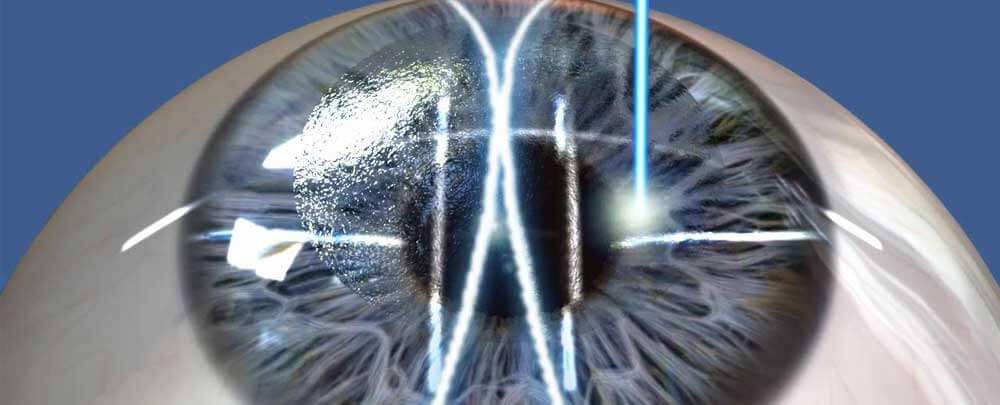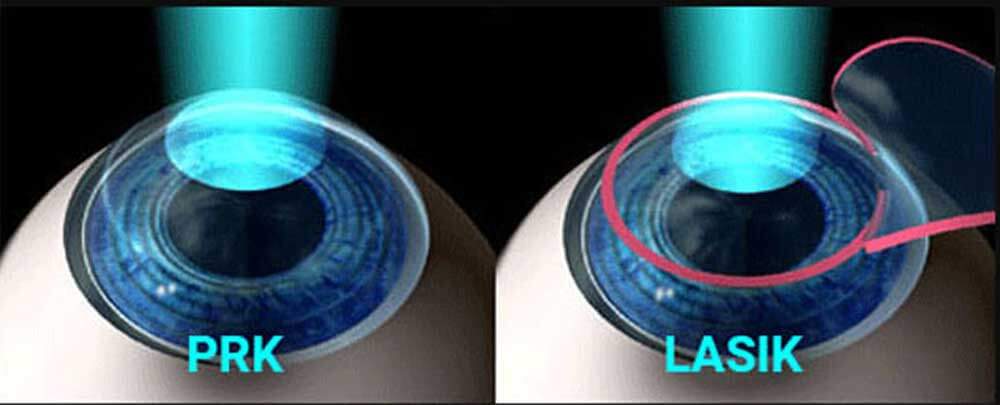

ASA (Advanced Surface Ablation)
Best Advanced Treatment for Advacned Surface Ablation Lasik Laser Treatment in Andheri Mumbai
ASA (Advanced Surface Ablation) is a refractive surgery technique designed to correct vision issues such as myopia (short-sightedness), hyperopia (long-sightedness), and astigmatism. It evolved from PRK, the pioneering laser eye surgery for vision correction, and serves as the precursor to the widely used LASIK and SMILE procedures. ASA is also known as PRK (photo refractive keratectomy). Ashu Laser Vision treats the best Advanced Surface Ablation Laser (ASA) eye clinic in Andheri Mumbai.
What is ASA (Advanced Surface Ablation)?
ASA also known as PRK and it is a type of refractive surgery used to correct vision problems. Despite its various names, the procedure is generally consistent across different refractive surgeons. ASA is often recommended for patients who are not candidates for LASIK or SMILE, typically due to factors such as a thin cornea, which makes creating a flap or lenticule safely challenging, or issues like corneal scarring or corneal structure weakness. Ashu Laser Vision treats the best Advanced Surface Ablation Laser (ASA) eye clinic in Andheri Mumbai.



Before Your ASA Procedure (Consultation Process)
Prior to undergoing ASA, a comprehensive eye examination with Dr. Shahnawaz Kazi is required to determine your suitability for the ASA procedure. During this consultation, several factors will be assessed:
⦁ Stable Prescription: Your vision prescription must have been stable for at least 12 months before surgery.
⦁ General Eye Health: Overall condition of your eyes.
⦁ Refractive Error: Specific details of your prescription to ensure it falls within treatment parameters:
⦁ Up to -8.00 diopters of myopia (short-sight)
⦁ Up to +5.00 diopters of hyperopia (long-sight)
⦁ Up to -4.00 diopters of astigmatism
⦁ Corneal Thickness: Measurement of the thickness of your cornea.
⦁ Visual Acuity: Your vision with and without corrective lenses or glasses.
⦁ Pupil Size: Size of your pupils.
⦁ Corneal Shape: Shape of your cornea.
⦁ Ocular History: Any relevant history of eye conditions.
⦁ Other Factors: Any other eye conditions or relevant family history.
A corneal topography scan will be used to map the shape of your cornea. If you wear contact lenses, you will need to stop wearing soft contacts for 10 to 14 days, or longer if you use hard or gas permeable lenses, as they can distort the corneal shape and affect measurement accuracy. If necessary, you may be asked to extend the period without contact lenses and return for additional scans and testing.
Approximately 80% of patients initially considered for SMILE or LASIK are eligible for those treatments. For the remaining 20%, ASA or ICL (implantable contact lenses) are excellent alternatives that can correct refractive errors and reduce dependence on glasses. A small percentage of patients may find that none of these options are suitable for them.
During Your ASA Procedure
At the start of the ASA procedure, Dr. Shahnawaz Kazi will apply local anesthetic eye drops to numb your eye(s) completely. A small clip will then hold your eyelid open, but you won’t feel it and you can blink normally. Although your eye won’t close, it will feel as if you’re blinking, so there’s no need to consciously keep your eyes open.
Dr. Shahnawaz Kazi will use a mild alcohol-based solution, applied through a small ring placed on the surface of your eye, to soften and remove the outer layer of cells (epithelium). This step exposes the underlying corneal tissue. Next, the laser will be used to precisely remove microscopic layers of tissue, reshaping the cornea to correct your refractive error.
Following the laser treatment, your eye will be thoroughly rinsed, and Dr. Shahnawaz Kazi will place a clear contact lens over it. This bandage lens will remain in place for the first five days post-surgery to enhance comfort. The entire procedure typically takes about 20 minutes to complete.
Ashu Laser Vision treats the best Advanced Surface Ablation Laser Lasik (ASA) eye clinic hospital in Andheri Mumbai.
Day of Surgery – What to Expect
All necessary information regarding your surgery day will have been provided during your consultation. Your laser eye surgery (ASA) with Dr. Shahnawaz Kazi will take place at our advanced surgical suite in Mumbai. Our new Lasik Laser MICRON M7 REFRACTIVE EXCIMER LASER, is the fastest Lasik Laser Machin in Mumbai, Maharashtra, which helps you for removing your glasses numbers within few minutes.
On the day of your procedure, you should plan to spend approximately 3 hours at the clinic. The laser operating suite is carefully controlled for temperature and humidity, so comfortable, light clothing is recommended. To avoid discomfort, especially when lying flat, it’s best to have only a light snack and stay well-hydrated before your surgery, as a full stomach and anxiety can be unsettling.
Please refrain from wearing perfume, aftershave, or alcohol-based deodorants. Women are also asked to avoid makeup to ensure that the eye area is thoroughly cleansed.
Upon Arrival and Admission
When you arrive, our staff will greet you and start the admission process. This includes confirming your details and reviewing your post-operative eye drop regimen. These eye drops are crucial for preventing infection, managing dry eye, and reducing inflammation that typically follows ASA. You will also be guided to take pain relief tablets as needed after the procedure or before bed.
After Your ASA Procedure in Andheri West Mumbai.
Once your ASA procedure is complete, you’ll be taken to a comfortable recovery area to rest. Before you head home, Dr. Shahnawaz Kazi will perform a final check on your eye(s) and address any questions you might have. Although most questions are addressed during pre-surgery consultations, Dr. Shahnawaz Kazi will ensure you have all the information you need.
After being discharged, you should head straight home. We recommend having a friend or family member assist you with eye drops and provide support on the first night following surgery. Avoid driving, bathing or shower until Dr. Shahnawaz Kazi confirms that your vision meets driving standards, which will likely be assessed at your 5-day post-operative visit when your bandage contact lenses are removed.
ASA Aftercare in Andheri West Mumbai
On the day of your surgery, you will receive an eye drop medication chart and your post-operative eye drops. Following the prescribed regimen is essential for minimizing healing time and enhancing comfort. To manage light sensitivity—a common temporary side effect—wear non-prescription sunglasses outdoors for the first couple of weeks. Sunglasses will also help protect your eyes from dust and further irritation.
Avoid rubbing your eyes after the procedure. To prevent accidental rubbing during sleep, you’ll be provided with clear plastic eye shields to wear for the first 5 nights while your corneal flap heals. Also, avoid getting water in your eyes for the first couple of weeks. If your eyes feel itchy, use lubricating eye drops instead of squeezing them closed.
Refrain from wearing eye makeup for the first 7 days following ASA, and avoid contact sports for up to 4 weeks. It’s also advisable not to swim for 2 weeks. Discuss your sports and hobbies with Dr. Shahnawaz Kazi during your consultation to receive specific aftercare advice tailored to your activities. Ashu Laser Vision treats the best Advanced Surface Ablation Laser (ASA) eye clinic in Andheri Mumbai
Choosing the Right Surgeon
Contrary to popular belief, the success of your surgery is not solely dependent on the laser but significantly influenced by the surgeon’s skill and experience. An experienced surgeon, with a broad knowledge base and proven success, is essential. Dr. Shahnawaz Kazi, a specialist in cataract, refractive, and retinal surgery, has performed thousands of successful procedures since 2004. He is the founder, director and chief surgeon of Ashu Laser Vision & Ashu Eye Hospital in Andheri West Mumbai. Ashu Laser Vision treats the best Advanced Surface Ablation Laser (ASA) eye clinic in Andheri Mumbai.
Dr. Shahnawaz Kazi is dedicated to providing visual freedom for his patients. He will thoroughly educate you about the most suitable procedure for your needs and advise on the safest and most effective options. Remember, achieving an outstanding outcome involves three critical steps: 1) Consultation, 2) Surgery, and 3) Aftercare. You can trust that your vision is in the hands of a world-class surgeon.
Advanced Surface Ablation (ASA) laser treatments offer a cutting-edge solution for correcting vision issues such as myopia, hyperopia, and astigmatism. Unlike traditional LASIK, ASA involves removing the outer layer of the cornea to reshape it and improve vision, making it an ideal choice for patients with thinner corneas or those who are not suitable candidates for LASIK. For individuals seeking the most effective and personalized care, the best Advanced Surface Ablation laser (ASA) eye clinic in Andheri Mumbai provides top-notch technology and expertise to ensure optimal results. This clinic is renowned for its commitment to precision and patient care, utilizing the latest ASA techniques to achieve clear and lasting vision improvements.
Choosing the best Advanced Surface Ablation laser (ASA) eye clinic in Andheri Mumbai means entrusting your eye care to a team of highly skilled professionals who are dedicated to providing exceptional results. The clinic’s state-of-the-art facilities and advanced ASA laser technology enable customized treatment plans tailored to each patient’s unique needs. With a focus on thorough pre-operative assessments and comprehensive post-operative care, this leading clinic ensures that you receive the highest standard of eye care, enhancing your visual outcomes and overall satisfaction.


 Book Consultation
Book Consultation